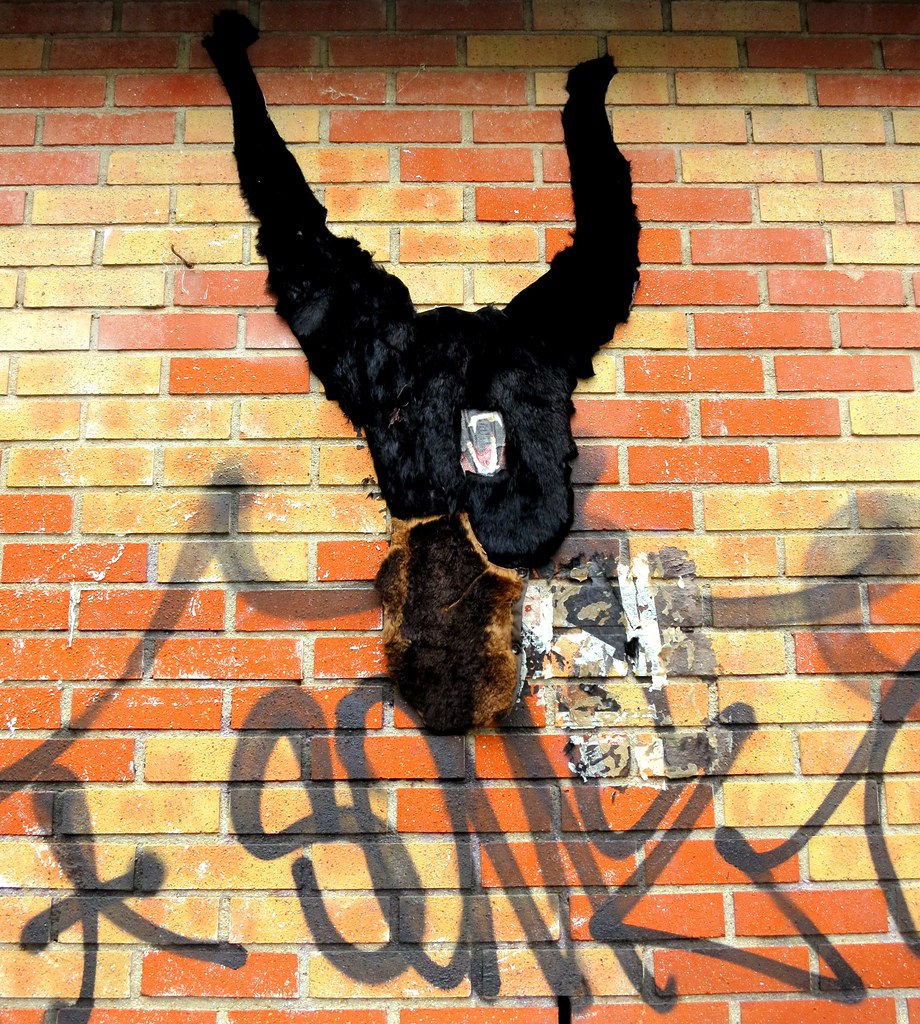 |
| Angry ape on wall of the Halle Saint Pierre |
The King of Tars is story about proof. So is Guy de Cambrai's Barlaam and Josephat. And likewise an account of a divining ape at the early 17th-century Mughal court. The first needs to demonstrate the proof of Christianity: it does this, spectacularly, by transforming a "wonderlumpe" (from Sarah Star, here) -- a unformed, bloodless, boneless nub of stuff -- into a baby, through baptism; its father from a Black Sultan into a White Crusader; and the near east, from Islam to Christianity, through a crusade that batters its Muslim opponents into bloody submission. The second, a medieval Christianized version of the story of the Buddha, similarly ends its philosophical debates -- about the unity of the Trinity and the singular power of the Creator and the uselessness of worldly pleasures -- with its own crusade, rare in the Barlam tradition, in which Christianity wins again by beating its pagan enemies down. And in the last story, we have an ape unerringly drawn to Christ's name:
his Majesty...caused in twelve several papers in Persian letters, to be rewritten the names of twelve Lawgivers, as Moses, Christ, Mohamet, Ally, and others: and shuffling them in a bagge, bad the beast divine which was the true law: who putting in his foot tooke out the inscribed of Christ. This amazed the King, who suspecting that the Apes master could reade Persian, and might assist him, wrote them anew in Court Caracters, and presented them the second time: the ape was constant, found the right, and kissed it. Whereas a principall Officer grew angry, telling the King it was some imposture, desiring he might have leave to make the lots anew, and offered himselfe to punishment if the Ape could beguile him; he wrote the names putting only eleven into the bagge, and kept the other in his hand. The beast searched, but refused all; the King commanded to bring one, the beast tore them in fury, and made signe the true Law-givers name was not among them. The King demanded where it was, and he ran to the Noble-man and caught him by the hand, in which was the paper inscribed with the name of Christ Iesus. The King was troubled, and keepes the Ape yet. (here; also here; and here; and see here for more)
All of these stories are about proof. Narrative fundamentally differs from philosophy in its mode of proof. Philosophy tends to operate sequentially, but timelessly, in a kind of parallel universe in which the only things that move are arguments, and in which the final argument somehow reaches back through the whole line of proofs to affix it in a quivering, shining stasis. Narrative operates sequentially as well, but it ends when action must stop, when the genre demands that it be wrapped up, not when thought has sufficiently demonstrated itself.
The problem with narratives of proof, therefore, is their being narratives, bound to action, and as a result, committed to establishing their proofs through action. Whatever the truth of Christianity, or a Trump Electoral College victory, the only real order of truth these narratives are able to follow is that of action, in which truth is established when the other side is made to stop talking, or when some dumb beast proves truth because it cannot do anything but. Or when the rules of the genre demand that the game end.
We see, then, that narrative proof fundamentally wants to escape from reason and disputation. This is a Christian 'humanism' - or an electoral movement - that wants an end to conversation, that yells at us to 'give up! you lost!', and is always seeking some way not to have to reason anymore (see #3 here, for example). That always wants the action to relieve them of the work and responsibility of having to think.
 |
| your humble author, in the midst of it. |
No comments:
Post a Comment